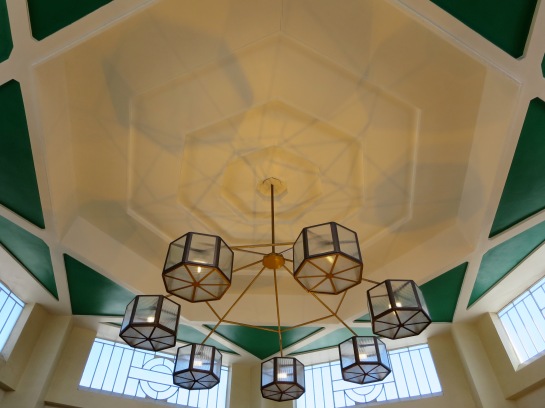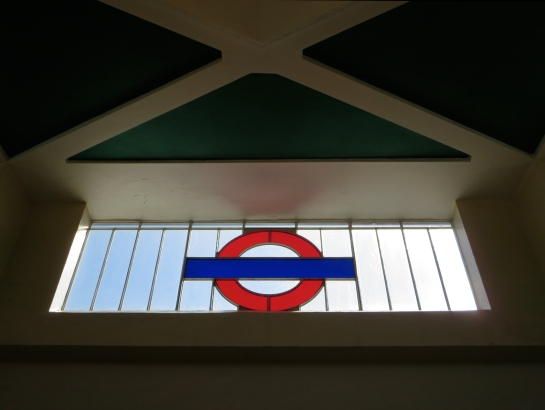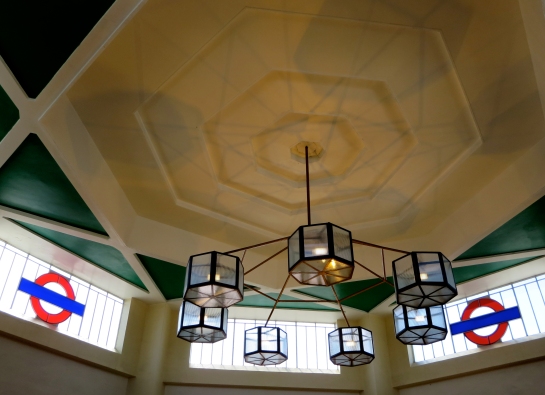 I don’t know much about geometry, but I know what I like.
I don’t know much about geometry, but I know what I like.
Nonagons, meh. Decagons: too much. Pengatons? They don’t go far enough. A heptagon, however, is a tangle that I’m very happy to get into.
It’s the heppest of all polygons. It has just the right number of sides to allow mathematics to appear beautiful. When you hold one in your hand – in the guise of a 20 or 50 pence piece – it just feels right. Not overdone or underdone. Not fussily complicated or disappointingly sparse. Just right.
And when you get to see one that’s large enough to walk all the way round… well, you know that something is right.
 The feast of heptagons inside Hounslow West station is toasted on the outside by something of equal majesty. There are hardly any buildings in London that have these alluring dimensions. There are hardly any in the UK, for that matter. Are seven-sided shapes really considered so unruly and disruptive as to be sent to the back of architectural class? Or told to go and stand down the other end of the corridor – in this instance, almost the very end of the Piccadilly line?
The feast of heptagons inside Hounslow West station is toasted on the outside by something of equal majesty. There are hardly any buildings in London that have these alluring dimensions. There are hardly any in the UK, for that matter. Are seven-sided shapes really considered so unruly and disruptive as to be sent to the back of architectural class? Or told to go and stand down the other end of the corridor – in this instance, almost the very end of the Piccadilly line?
No matter. At least this one exists, and in such fine fettle. The building lets slip discreet pulses of flair in all of its seven directions. In bright sunshine it sparkles. In grey rain it beckons and reassures. And its colours strike at your heart no matter what the climate. This is style and symmetry of a hugely rare but high order.
Race you round the sides. First one back gets to peek through the round(el) window.






